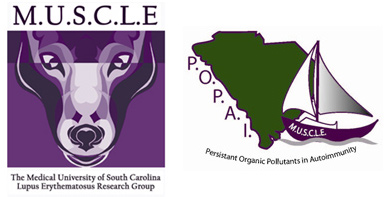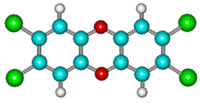Partnerships for Environmental Public Health (PEPH)
Academic Partners:
Medical University of South Carolina
Diane L. Kamen, M.D.
Medical University of South Carolina Lupus Erythematosus Research Group
Community Partner:
Sea Island Families Project Citizen Advisory Committee


Project Description
Researchers at the Medical University of South Carolina collaborated with the Sea Island Families Project Advisory Committee to determine whether environmental exposures trigger autoimmunity and to develop strategies for exposure reduction and disease prevention.
The historically isolated African American Gulla/Geechee population of the Sea Islands of South Carolina and Georgia is a unique community for defining environmental factors for autoimmune diseases. This population has a high prevalence of autoimmunity, particularly systemic lupus erythematosus (SLE). Additionally, locally caught seafood is a dietary staple for this population. High levels of polybrominated diphenyl ethers (PBDEs) and perfluoroalkyl acids (PFAAs) have been found in local bottlenose dolphins and red drum, two wildlife species that serve as surrogates of human health effects. Research has established links between these compounds and immune system dysfunction and autoimmune disease. The partnership studied the link between these persistent organic pollutants and autoimmunity.
The project partners:
- Developed a questionnaire to assess the occupational and dietary burden of exposure to PBDEs and PFAAs among the Gullah community living in South Carolina.
- Conducted dietary surveys for 103 study participants. Survey results confirmed that local seafood consumption is common, with 57 percent reporting they consumed locally caught seafood at least once a month, 25 percent catching fish from shores/piers/bridges, and 91 percent consumed species known or suspected to contain high levels of persistent organic pollutants in the Charleston Harbor area.
- Interviewed Gullah/Geechee community members, finding that the majority who fish either do not understand or mistrust posted fish advisories warning of potentially hazardous contamination.
- Detected measurable blood serum levels of perfluorinated chemicals (PFCs) in all study participants at baseline and follow-up visits.
- Found that the number of servings of seafood consumed each year directly correlated with baseline levels of the PFCs perfluorooctane sulfonate (PFOS) and perfluorononanoic acid, with the strongest correlation with self-reported intake of seafood known to have the highest concentrations of PFCs.
- Found that study participants with autoantibodies present in their blood but without lupus had higher median levels for the PFCs PFOS and perfluorooctanoic acid, compared to participants with no autoantibodies.
The ultimate goal of these ongoing studies is to improve the quality of and community participation in multidisciplinary research on the human health effects of environmental exposures and develop effective strategies for exposure reduction and autoimmune disease prevention.
Selected Publications:
- Midgett K, Peden-Adams MM, Gilkeson GS, Kamen DL. 2015. In vitro evaluation of the effects of perfluorooctanesulfonic acid (PFOS) and perfluorooctanoic acid (PFOA) on IL-2 production in human T-cells. J Appl Toxicol 35(5):459-465. [Abstract Midgett K, Peden-Adams MM, Gilkeson GS, Kamen DL. 2015. In vitro evaluation of the effects of perfluorooctanesulfonic acid (PFOS) and perfluorooctanoic acid (PFOA) on IL-2 production in human T-cells. J Appl Toxicol 35(5):459-465.]
- Gribble MO, Bartell SM, Kannan K, Wu Q, Fair PA, Kamen DL. 2015. Longitudinal measures of perfluoroalkyl substances (PFAS) in serum of Gullah African Americans in South Carolina: 2003-2013. Environ Res 143(Pt B):82-88. [Abstract Gribble MO, Bartell SM, Kannan K, Wu Q, Fair PA, Kamen DL. 2015. Longitudinal measures of perfluoroalkyl substances (PFAS) in serum of Gullah African Americans in South Carolina: 2003-2013. Environ Res 143(Pt B):82-88.]
- Carroll R, Lawson AB, Voronca D, Rotejanaprasert C, Vena JE, Aelion CM, Kamen DL. 2014. Spatial environmental modeling of autoantibody outcomes among an African American population. Int J Environ Res Public Health 11(3):2764-2779. [Abstract Carroll R, Lawson AB, Voronca D, Rotejanaprasert C, Vena JE, Aelion CM, Kamen DL. 2014. Spatial environmental modeling of autoantibody outcomes among an African American population. Int J Environ Res Public Health 11(3):2764-2779.]
- Miller FW, Alfredsson L, Costenbader KH, Kamen DL, Nelson LM, Norris JM, De Roos AJ. 2012. Epidemiology of environmental exposures and human autoimmune diseases: findings from a National Institute of Environmental Health Sciences Expert Panel Workshop. J Autoimmun 39(4):259-271. [Abstract Miller FW, Alfredsson L, Costenbader KH, Kamen DL, Nelson LM, Norris JM, De Roos AJ. 2012. Epidemiology of environmental exposures and human autoimmune diseases: findings from a National Institute of Environmental Health Sciences Expert Panel Workshop. J Autoimmun 39(4):259-271.]


